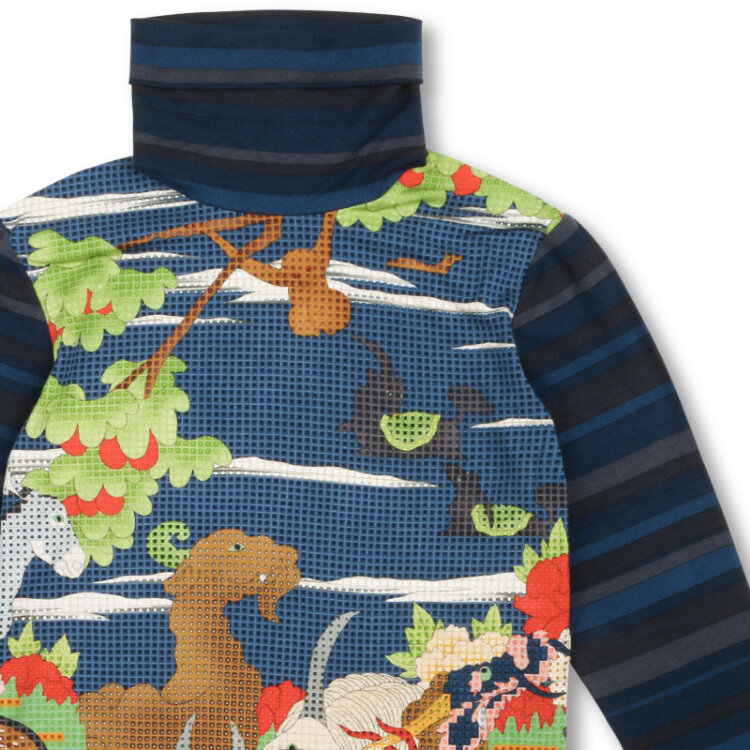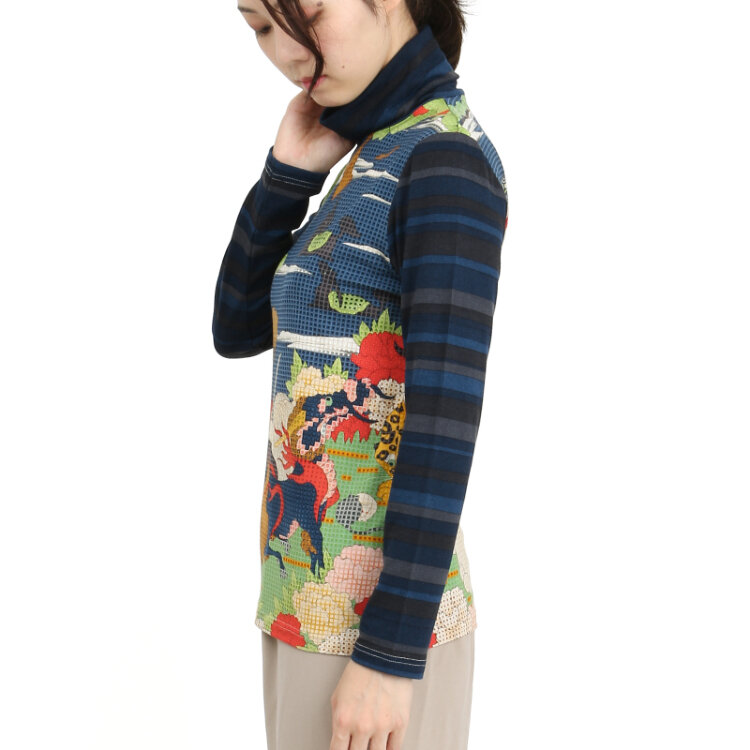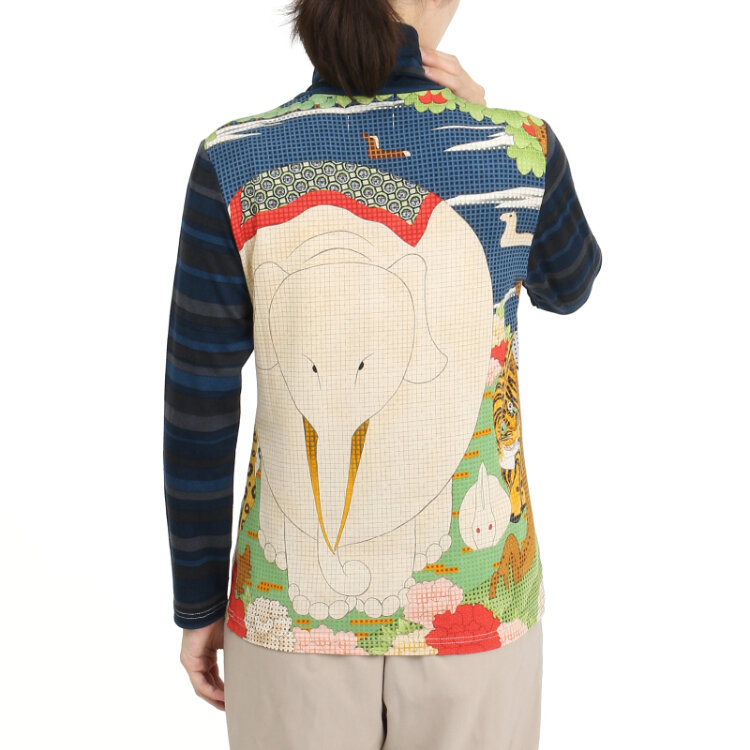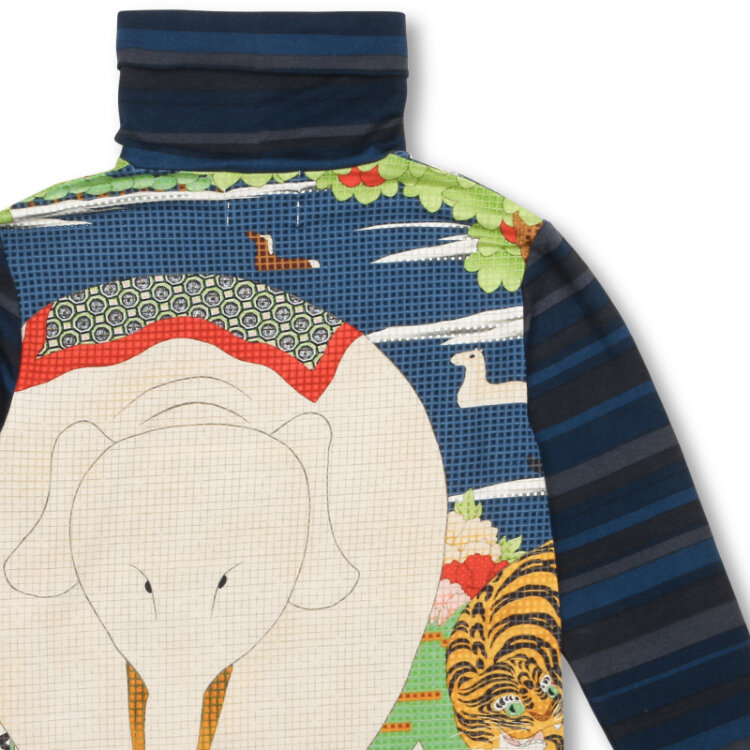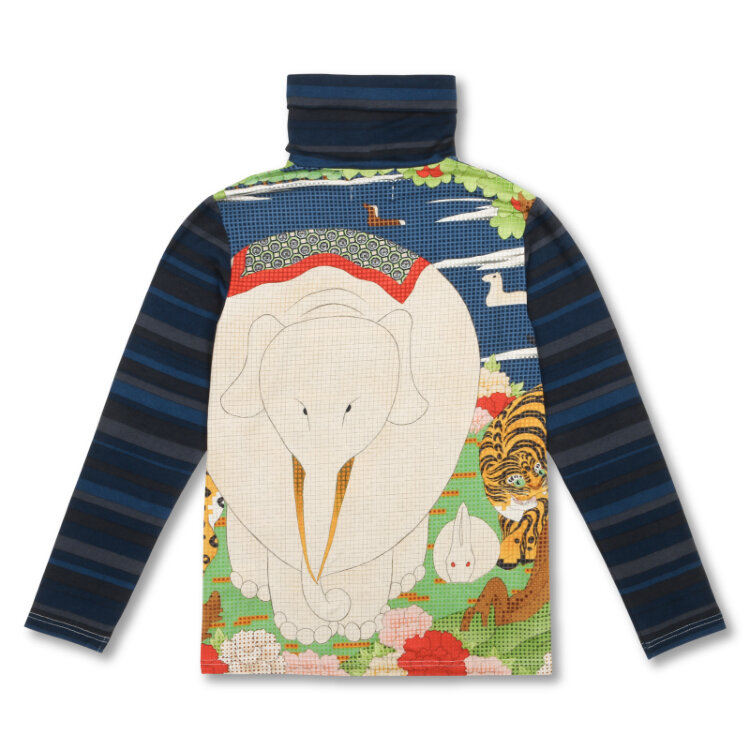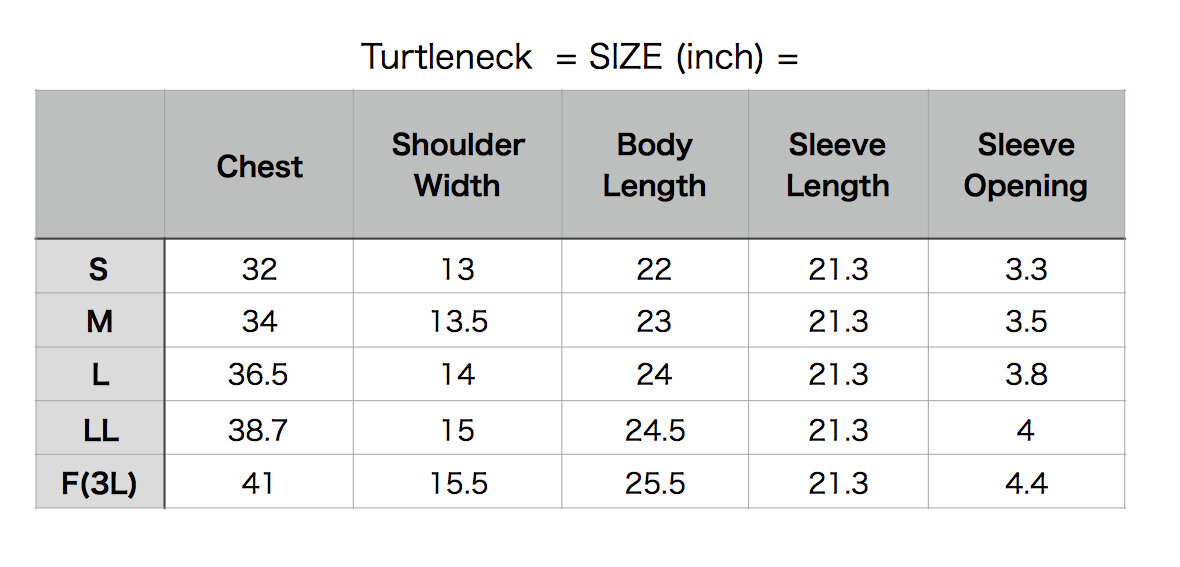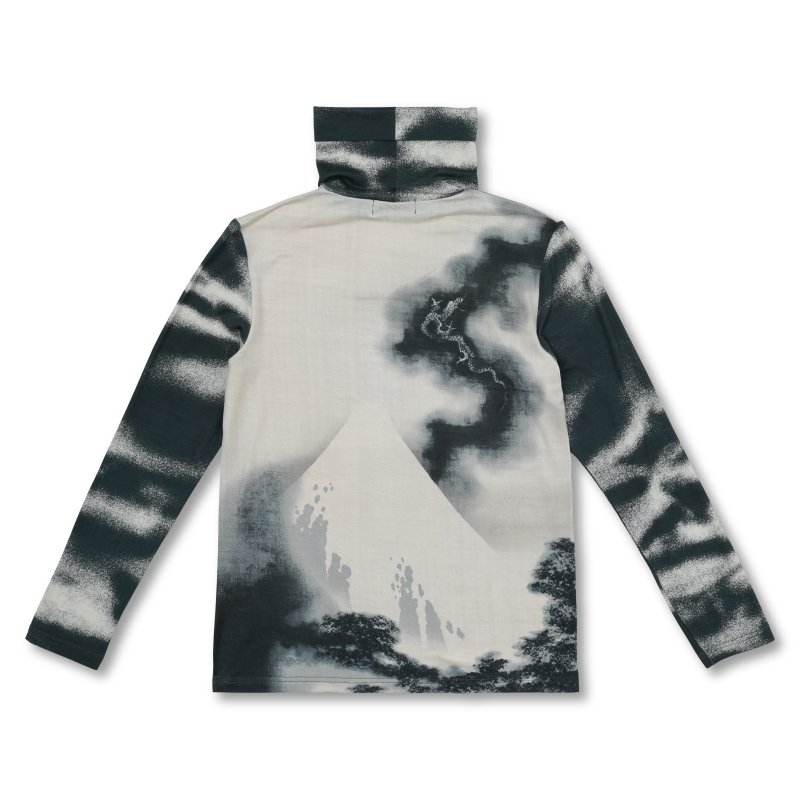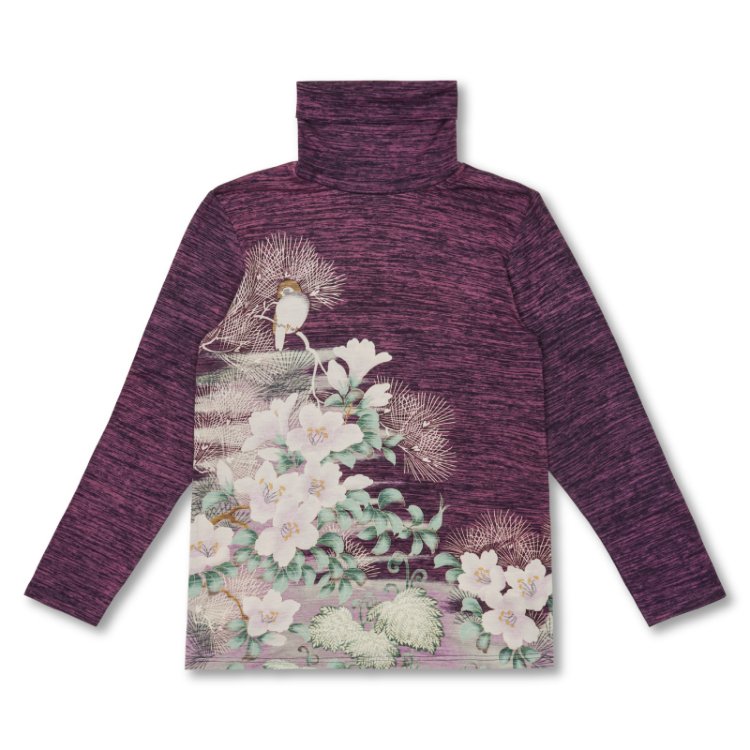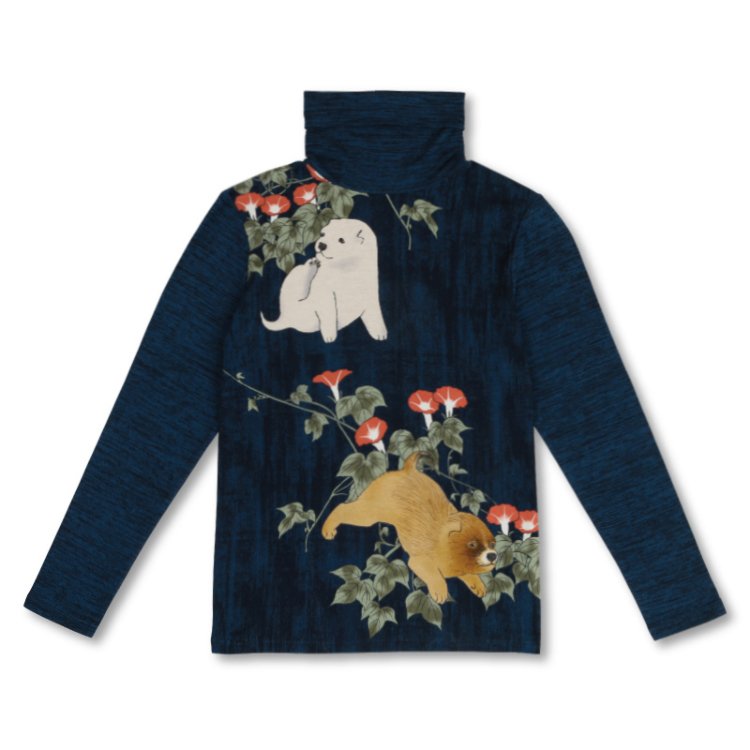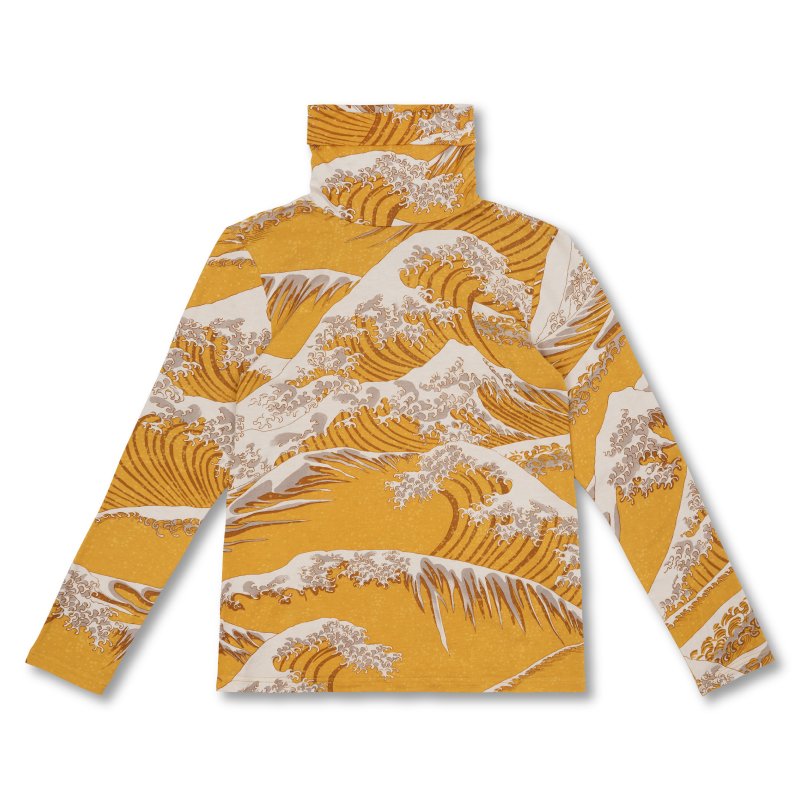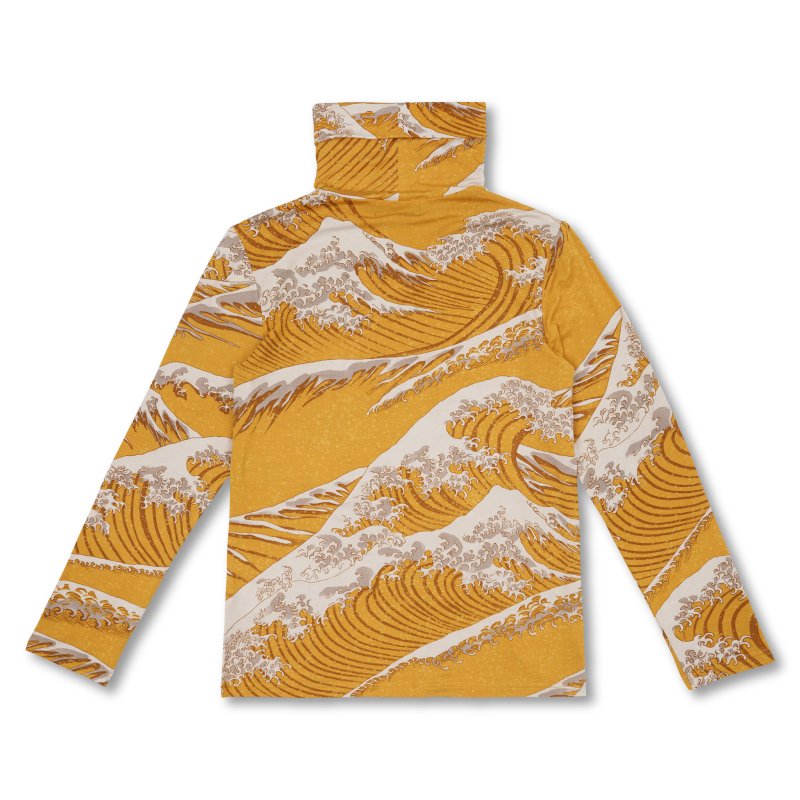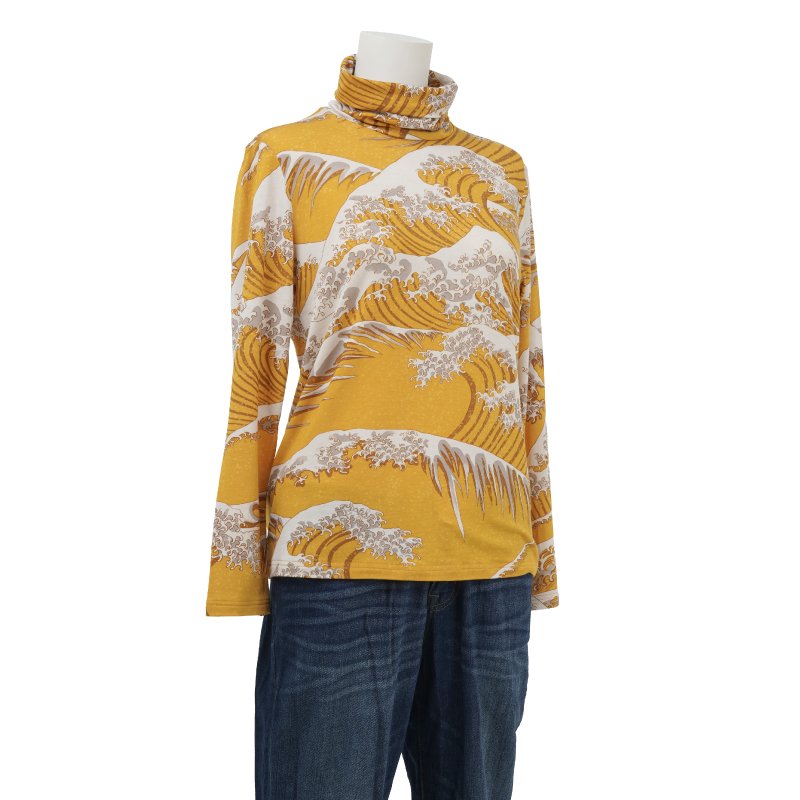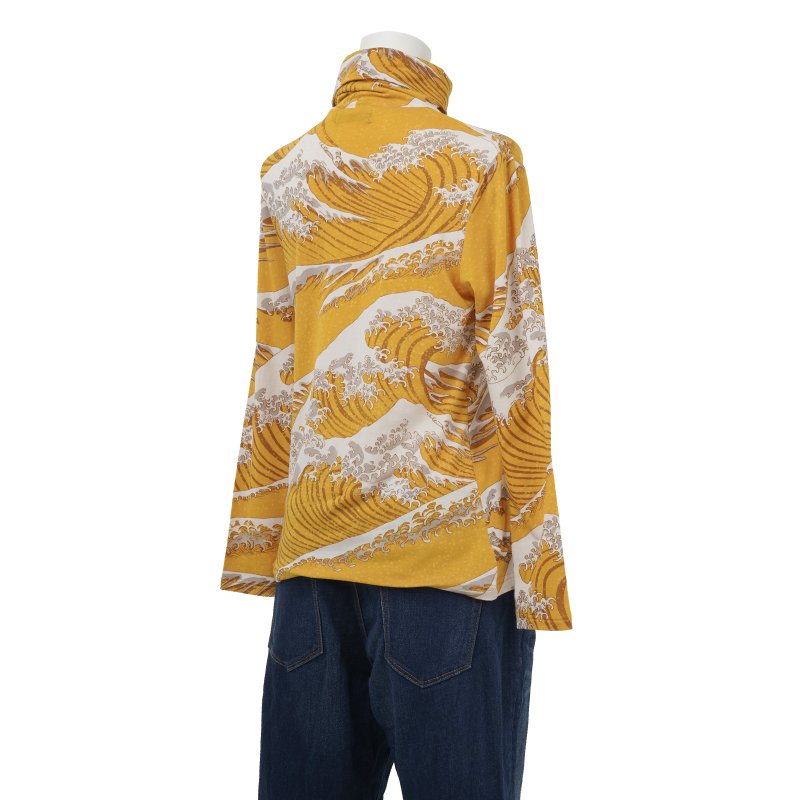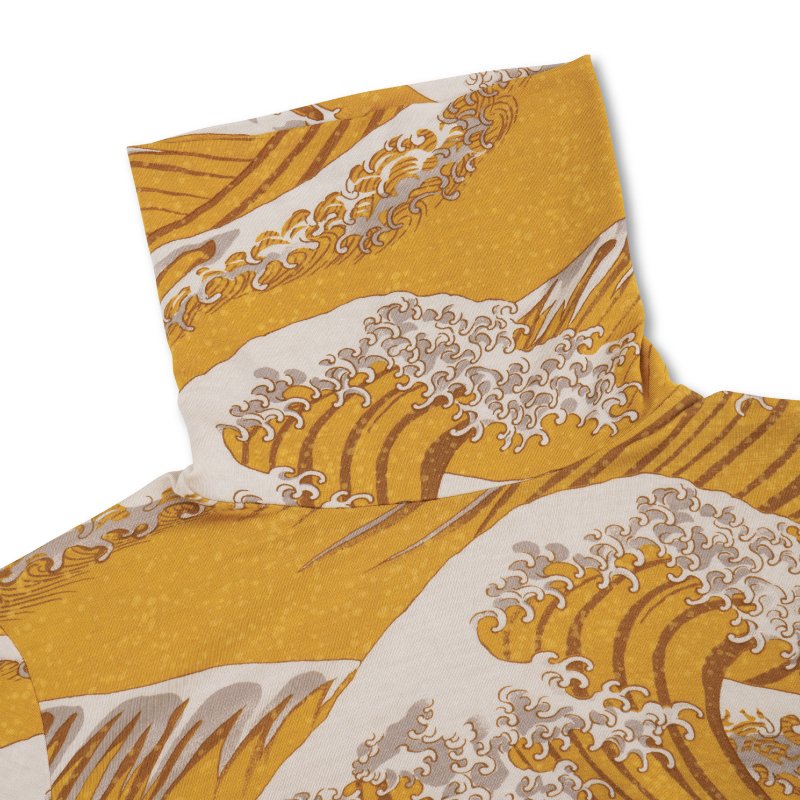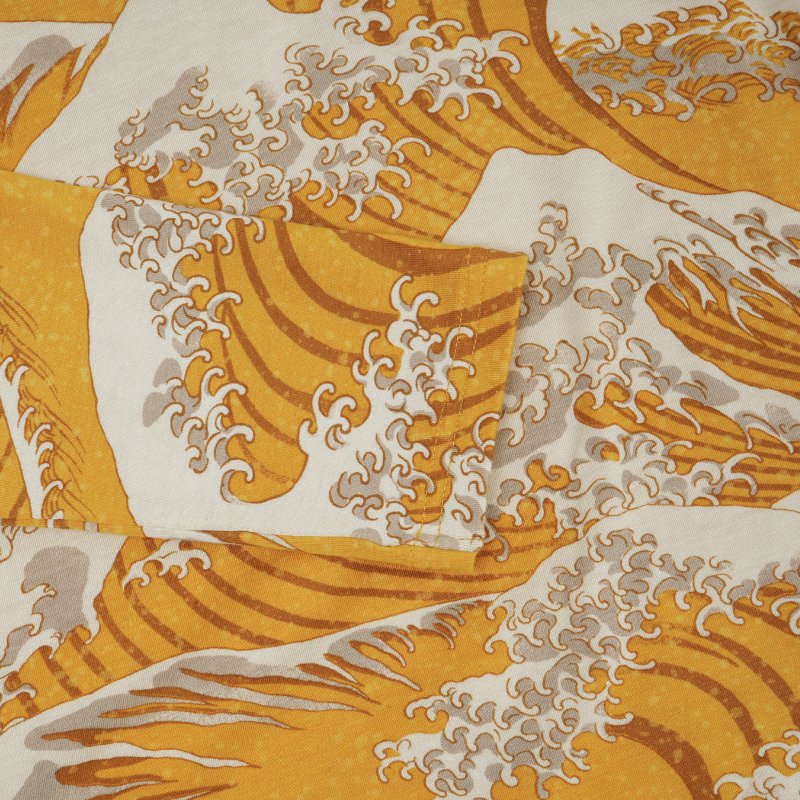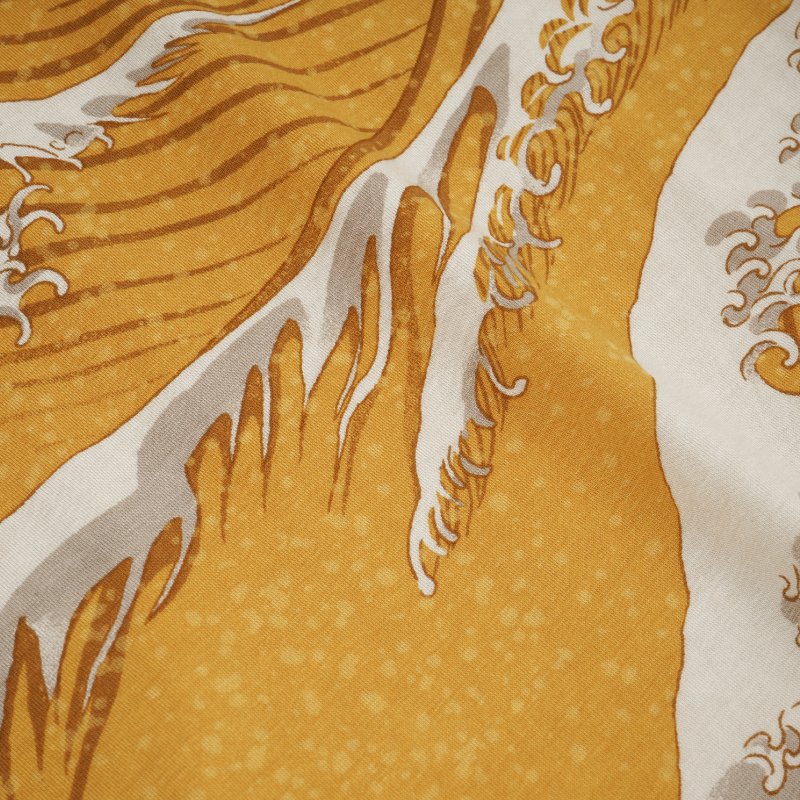CHOJUKABOKUZU/ JAKUCHU ITO-"Birds, Animals, and Flowering Plants in an Imaginary Scene" Turtleneck
Color / Navy, with Multi-colors Size chart is below Care Instruction
Japanese name/ 鳥獣花木図 ( CHOJUKABOKUZU )
-About-
Jakuchu Ito lived from 1716 to 1800, in the Nishiki area of Kyoto during the “golden age of art“ of the Edo era, before Japan opened its doors to the outside world.
Jakuchu was self-taught, and passionate about painting from childhood. A student of Buddhism at the Shokoku-ji zen monastery, he devoted himself to the art of painting, taking inspiration from classic Chinese paintings from the Yuan and Ming dynasties.
With nature as his teacher, he also began making thorough sketches of all natural phenomena, eventually establishing his own richly colored style of painting, as portrayed here in his “Birds, Animals, and Flowering Plants in an Imaginary Scene”, originally a pair of six-panel folding screens.
This timeless expression of the vital energy of flora and fauna, is a testament to Jakuchu Ito’s originality and genius. It is comprised of roughly 43,000 squares within each of the paintings’s panels. Animal figures within the scene are alive and alert showing their true nature in a style characteristic of Jakuchu.
At Pagong, in celebration of the 300th anniversary of the birth of Jakuchu Ito, we wish to breathe new freshness into these extraordinarily detailed depictions of plants and animals with the use of a kimono dyeing technique called Kyo-Yuzen.
A collaboration with the Idemitsu Museum of Art.
・93% Rayon 7% Polyurethane
・Made in Japan
・Heat-retention fiber
・Knit fabric
・Hand-wash
・Hang to dry
・Use pressing cloth to iron
・Currency : US Dollar (USD)
Color / Navy, with Multi-colors Size chart is below Care Instruction
Japanese name/ 鳥獣花木図 ( CHOJUKABOKUZU )
-About-
Jakuchu Ito lived from 1716 to 1800, in the Nishiki area of Kyoto during the “golden age of art“ of the Edo era, before Japan opened its doors to the outside world.
Jakuchu was self-taught, and passionate about painting from childhood. A student of Buddhism at the Shokoku-ji zen monastery, he devoted himself to the art of painting, taking inspiration from classic Chinese paintings from the Yuan and Ming dynasties.
With nature as his teacher, he also began making thorough sketches of all natural phenomena, eventually establishing his own richly colored style of painting, as portrayed here in his “Birds, Animals, and Flowering Plants in an Imaginary Scene”, originally a pair of six-panel folding screens.
This timeless expression of the vital energy of flora and fauna, is a testament to Jakuchu Ito’s originality and genius. It is comprised of roughly 43,000 squares within each of the paintings’s panels. Animal figures within the scene are alive and alert showing their true nature in a style characteristic of Jakuchu.
At Pagong, in celebration of the 300th anniversary of the birth of Jakuchu Ito, we wish to breathe new freshness into these extraordinarily detailed depictions of plants and animals with the use of a kimono dyeing technique called Kyo-Yuzen.
A collaboration with the Idemitsu Museum of Art.
・93% Rayon 7% Polyurethane
・Made in Japan
・Heat-retention fiber
・Knit fabric
・Hand-wash
・Hang to dry
・Use pressing cloth to iron
・Currency : US Dollar (USD)
Color / Navy, with Multi-colors Size chart is below Care Instruction
Japanese name/ 鳥獣花木図 ( CHOJUKABOKUZU )
-About-
Jakuchu Ito lived from 1716 to 1800, in the Nishiki area of Kyoto during the “golden age of art“ of the Edo era, before Japan opened its doors to the outside world.
Jakuchu was self-taught, and passionate about painting from childhood. A student of Buddhism at the Shokoku-ji zen monastery, he devoted himself to the art of painting, taking inspiration from classic Chinese paintings from the Yuan and Ming dynasties.
With nature as his teacher, he also began making thorough sketches of all natural phenomena, eventually establishing his own richly colored style of painting, as portrayed here in his “Birds, Animals, and Flowering Plants in an Imaginary Scene”, originally a pair of six-panel folding screens.
This timeless expression of the vital energy of flora and fauna, is a testament to Jakuchu Ito’s originality and genius. It is comprised of roughly 43,000 squares within each of the paintings’s panels. Animal figures within the scene are alive and alert showing their true nature in a style characteristic of Jakuchu.
At Pagong, in celebration of the 300th anniversary of the birth of Jakuchu Ito, we wish to breathe new freshness into these extraordinarily detailed depictions of plants and animals with the use of a kimono dyeing technique called Kyo-Yuzen.
A collaboration with the Idemitsu Museum of Art.
・93% Rayon 7% Polyurethane
・Made in Japan
・Heat-retention fiber
・Knit fabric
・Hand-wash
・Hang to dry
・Use pressing cloth to iron
・Currency : US Dollar (USD)



